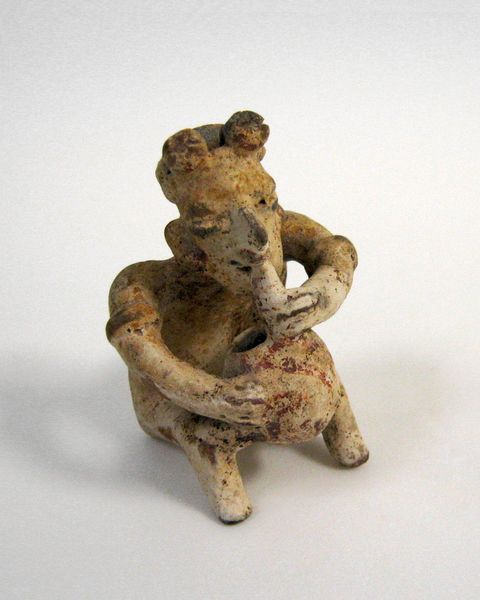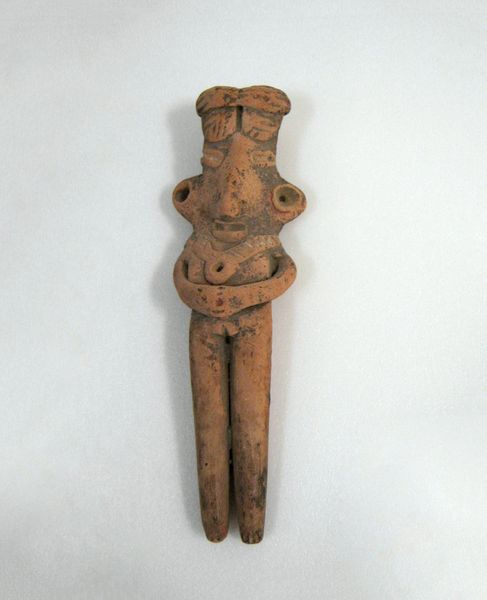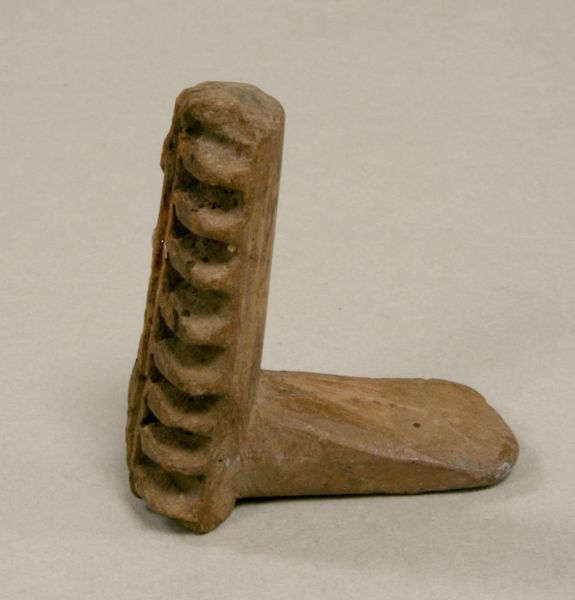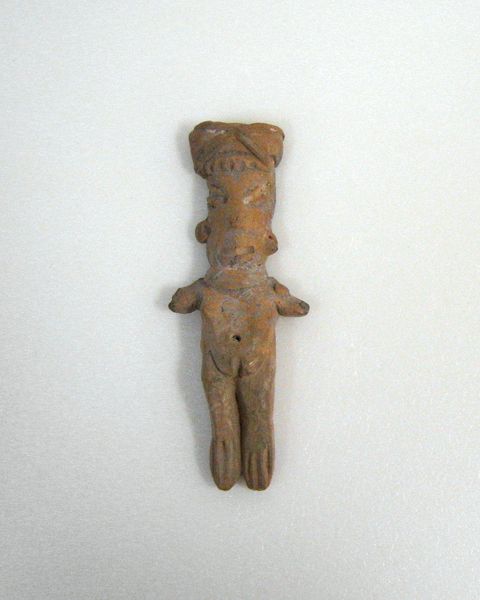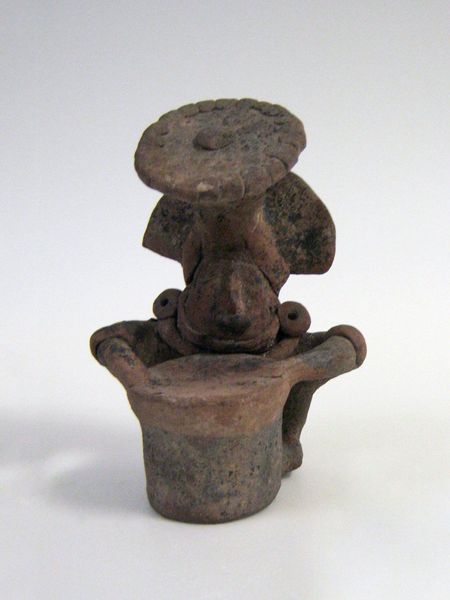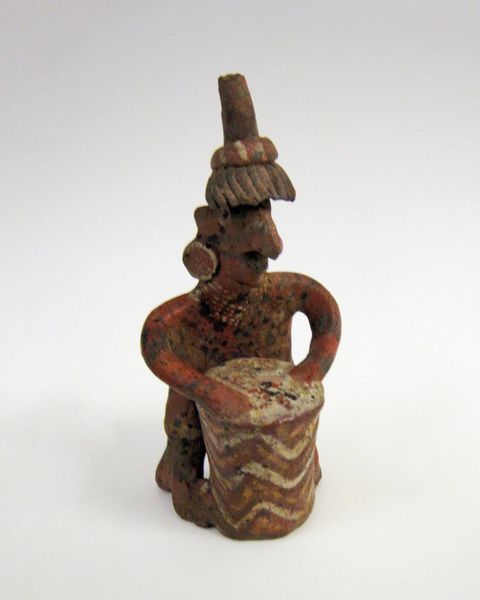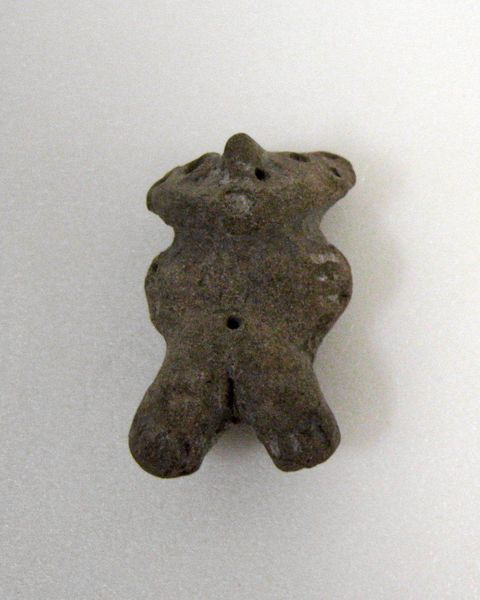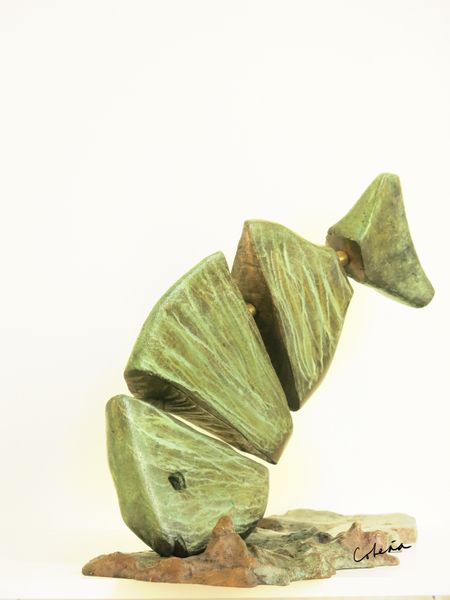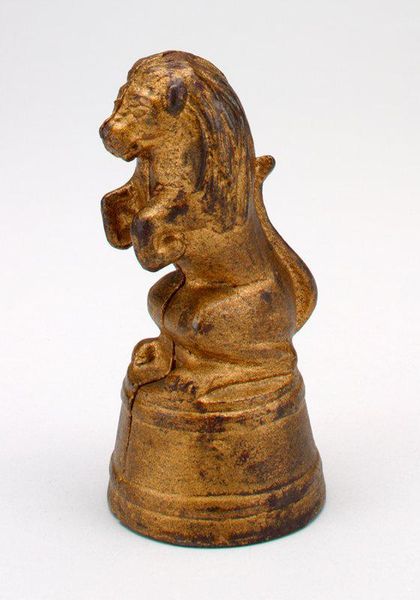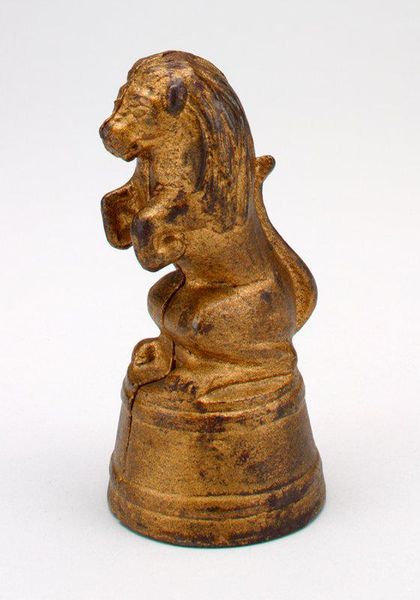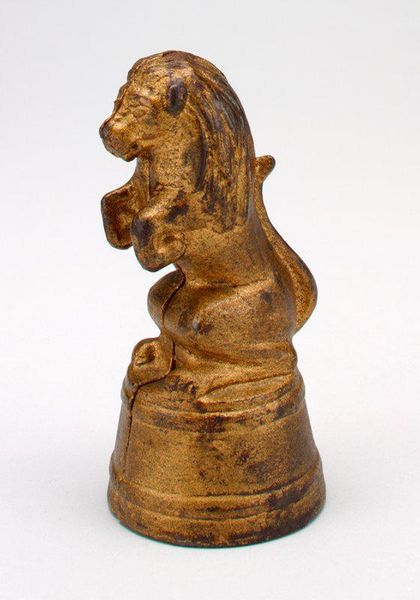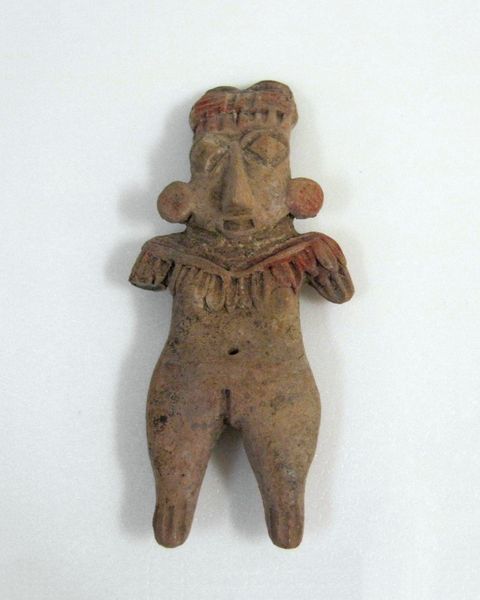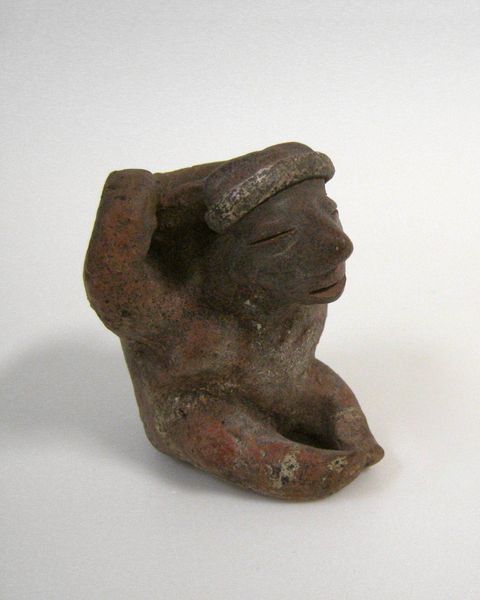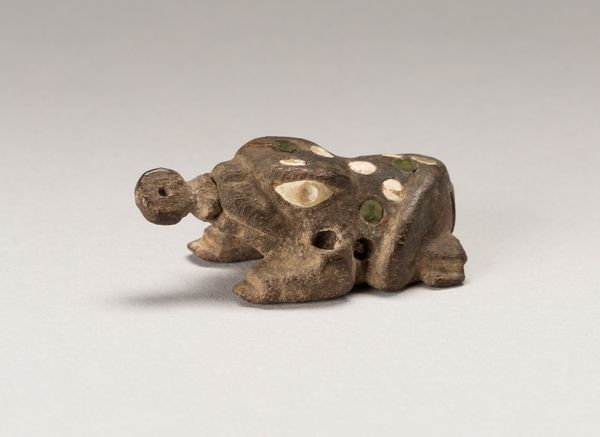
ceramic, earthenware, sculpture, terracotta
#
ceramic
#
figuration
#
earthenware
#
sculpture
#
terracotta
#
indigenous-americas
Copyright: Public Domain
Curator: Here we have a piece from ancient Nayarit, now part of modern-day Mexico. It's an earthenware sculpture, made around 500 AD, and titled "Seated two-legged figure with tail." Editor: My first thought is its unusual, almost precarious balance. The figure, with its slightly rough surface and warm, earthy tones, conveys a sense of both fragility and resilience. Curator: I agree. Consider its creation—these ceramic figures often played a role in funerary contexts, buried within shaft tombs. They acted as companions or guardians for the deceased. Editor: So, a visual language intended for the afterlife, carrying complex socio-political messages in terms of who gets represented and how. Do you see that echoed in the symbolism, though? I can't decide what sort of creature it is... almost mythical? Curator: Absolutely! While the exact significance is debated, such composite figures were likely important in their visual representation of shamanic practices. It brings to mind transformation and transition between human and animal worlds, almost as a connector between the earthly and spiritual realms. Editor: It's intriguing to imagine how the body—with the adornment or mask it seems to sport—may have been used to connect, say, class structures, performance rituals, and what constituted legitimate ways of knowing the world. Did access to its power exist throughout the Nayarit peoples, or were these effigies part of a specialized, closed system? Curator: It's difficult to know with certainty the full extent of its use, but art historians and archeologists think figures like these often reflect community leaders and were involved with religious traditions specific to these regions in ancient Mesoamerica. What stands out is the enduring power these visual representations possess to transcend cultural differences, communicating in profound, almost primal ways. Editor: And making us ask more and more questions across all that time. I am especially struck by its three-legged stance, it adds an almost otherworldly sense to its character. Curator: Indeed. The formal elements contribute significantly to its impact. It’s a glimpse into beliefs and lives far removed from our own, but still vibrantly present through this enduring, enigmatic image.
Comments
No comments
Be the first to comment and join the conversation on the ultimate creative platform.
